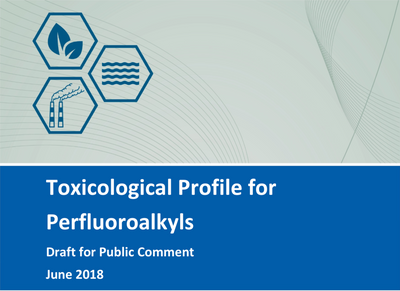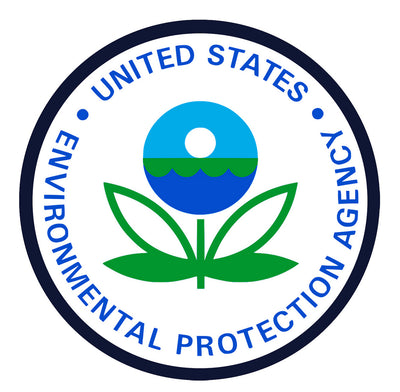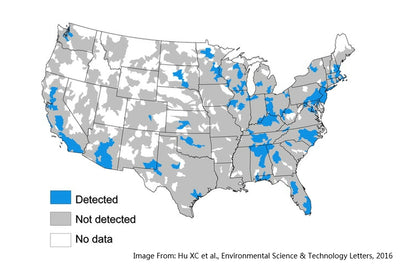What Are Heavy Metals?
Chemists categorize heavy metals as elements that are at least five times denser than water. Examples of heavy metals include: cobalt (Co), copper (Cu), chromium (Cr), iron (Fe), magnesium (Mg), manganese (Mn), molybdenum (Mo), nickel (Ni), selenium (Se), zinc (Zn), arsenic (As), mercury (Hg), and lead (Pb). Some heavy metals are essential minerals for healthy biochemical and physiological functions. Others, such as lead, chromium, arsenic, and mercury are toxic even when ingested in very small quantities. Elemental density and toxicity are interrelated. Arsenic, which is technically categorized as a metalloid (think of a metalloid as metal-like), is quite dense and is extremely toxic in very small quantities. Thus, toxicologists typically categorize arsenic as a heavy metal. Due to their shared high degree of toxicity, lead, cadmium, chromium, mercury, and arsenic are cause for significant public concern.
How Are We Exposed To Heavy Metals?
People can be exposed to heavy metals through ingestion, inhalation, or contact with skin. The severity of the health effects of heavy metals is related to the type and chemical form of each particular contaminant, and is also depends on the exposure time and dose.
Heavy metals have industrial, domestic, agricultural, medical and technological applications, and as a result they are now widespread in our environment. Heavy metal pollution in water is very high in areas where mining, smelters, metal processing refineries, wood preservation, and paper processing facilities are located. Human exposure to heavy metals as well as public concern for the associated health risks have both risen dramatically as a result of an exponential increase of their use in these various applications.
If Heavy Metals Are Toxic, Why Are They Found In Multi-Vitamins?
Some heavy metals including cobalt (Co), copper (Cu), chromium (Cr), iron (Fe), magnesium (Mg), manganese (Mn), molybdenum (Mo), nickel (Ni), selenium (Se) and zinc (Zn) are essential minerals that are necessary for various biochemical and physiological functions. They serve as components of several key enzymes and play important roles in various oxidation-reduction reactions in our bodies. Many of these metals are found naturally in the food we eat, while other foods are fortified with these minerals. For example, almost all grain products (cereal, bread, crackers, etc) are fortified with iron. Inadequate supply of these minerals can result in a variety of deficiency diseases. For example, anemia (red blood cell deficiency) can result from low iron. Supplements can prevent or treat diseases resulting from mineral deficiency.
Not all heavy metals are toxic in low quantities, however all heavy metals (yes, even the good ones) can be toxic if too much is ingested. Each heavy metal’s toxicity depends on dosage, method of exposure, age, gender, genetics, and nutritional status of the exposed individual. An excess amount of any particular heavy metal produces cellular and tissue damage leading to a variety of adverse effects and human diseases. For some including chromium and copper, there is a very narrow range of concentrations between beneficial and toxic effects, so be careful when taking supplements. Other metals such as aluminium (Al), antimony (Sb), arsenic (As), barium (Ba), beryllium (Be), bismuth (Bi), cadmium (Cd), gallium (Ga), germanium (Ge), gold (Au), indium (In), lead (Pb), lithium (Li), mercury (Hg), nickel (Ni), platinum (Pt), silver (Ag), strontium (Sr), tellurium (Te), thallium (Tl), tin (Sn), titanium (Ti), vanadium (V) and uranium (U) have no established biological functions and are considered non-essential metals in our diet.
What Is Heavy Metal Toxicity Or Heavy Metal Poisoning?
Each metal differs in how it behaves in our bodies, and exposure alone does not always cause disease or harm. Heavy metal-induced toxicity and carcinogenicity involves many biochemical processes, some of which are not clearly understood. The human body’s natural response to heavy metal exposure is to store them and slowly excrete them over time to minimize organ damage.
Acute heavy metal poisoning usually occurs when people are exposed to large amounts of one particular metal at a time. For example, a child swallowing a lead bullet can cause a large amount of lead exposure all at once. Acute exposures can quickly cause serious health effects or death.
Chronic or long-term exposure to lower levels of heavy metals can also cause health problems. The symptoms of chronic heavy metal poisoning can be severe, but are often less obvious and develop much more slowly over time than the symptoms caused by acute exposure. This is a topic of growing scientific evidence that needs to be better researched to clarify all the possible health implications. Chronic heavy metal poisoning can be challenging for both health care providers and patients because there are often many more questions than answers. Symptoms of chronic heavy metal toxicity can include but is not limited to headaches, fatigue, muscle and joint pain, and weakness. However, these same symptoms can be caused by many other health problems unrelated to heavy metal toxicity. True chronic heavy metal poisoning is rare but also difficult to diagnose.
What Are The Health Effects Of Heavy Metal Toxicity?
Even in very low quantities, lead, cadmium, chromium, mercury, and arsenic are known to induce cardiovascular diseases, developmental abnormalities, neurologic and neurobehavioral disorders, diabetes, hearing loss, hematologic and immunologic disorders. These heavy metals are also classified as human carcinogens (known or probable) according to the U.S. Environmental Protection Agency, and the International Agency for Research on Cancer.
Although the acute and chronic effects are known for some metals, little is known about the health impact of mixtures of heavy metals. Studies have shown that toxic heavy metals can interfere with absorption and use of nutritionally essential metals such as iron, calcium, copper, and zinc. However, the research on the combined effects of heavy metal exposure is very limited.
How Can I Minimize Exposure To Heavy Metals?
The best way to reduce heavy metal pollution is prevention. Identify sources of heavy metals in your home and remove them. Here are some helpful suggestions:
- Be aware of local fish advisories for mercury contamination.
-
Test the water in your home for heavy metals and install a home water filtration system if necessary.
- Read labels on products coming in to your home.
- Store products containing heavy metals out of reach of children.
Other Articles We Think You'll Love:
How To Filter Chromium 6 From Your Drinking WaterTesting Your Home's Water For Lead? Read This First!Chromium 6 and Lead Problems In Pittsburgh's Tap Water











